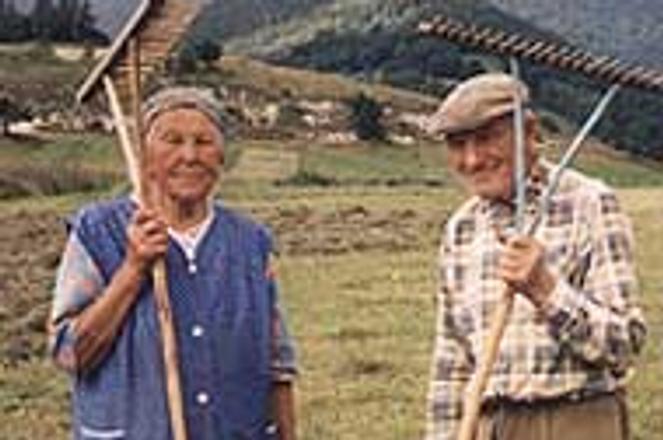Beautiful wilderness, rugged living, home-made hard alcohol, hospitable locals, and sheep are all charcteristics of the 'real' Slovakia.photo: Ján Štrba
Slovaks outside Bratislava have always said that the capital city is not the 'real' Slovakia. For all its renewed charm, Bratislava is not very close to the nation's hearts. The livid concrete scars of Petržalka, Dúbravka and Dlhé Diely are not Slovakia. The suffocating dirt and grime of the big city is not Slovakia. The rude and aggressive attitude of strangers and those working in any customer service job is also not Slovakia.
No, Bratislava is not the real Slovakia. The real Slovakia is a village that borders a stream cascading down from jagged peaks or rolling hills. The real Slovakia is a city with medieval charm, gigantic cathedrals, castle walls and cobblestone squares. And the real Slovak is a person who, though worn by 50 years of communism and 10 years of dashed hopes, remains funny, charming and friendly.
So for foreigners wanting to understand the country they are temporarily calling home, the only thing to do is push one's stool away from the bar and head off into the countryside. Only in this way is it possible to break through the myths in which the real Slovakia has been shrouded over the past 10 years. For foreigners, the 'Wild East' seems to start at the highway leading out of the city.
One common myth that a trip through Slovakia's smaller villages may shake is the belief that nobody 'out there' can speak English. This is partially true, but many young people can speak a few words of English or German and, although sometimes shy, they are quite willing to stammer out a phrase or two in a pinch. But even if nobody under 25 is available, making the effort to ask villagers for directions or advice in a friendly way often results in a personal escort to your destination, and quite possibly a visit to their home for something to eat or drink. Especially drink.
Another common myth is that living conditions in the countryside are poor. True, the dreary Stalinist builidings which blight almost every Slovak community provide as bleak an environment as they do in Bratislava, but inside these buildings people take enormous pride in the appearance of their flat. Plus, for those who measure the level of modernity by how much television a nation watches, satellite TV with over 30 channels in 10 different languages is the norm in most Slovak villages.
The last common myth to debunk is the belief that the real Slovakia's roads are often congested with flocks of sheep or herds of cattle. This can't be refuted. Shepherds and herdsmen do sometimes have to cross main roads to take their charges into uninhabited mountain valleys that straddle main thouroughfares. But if travellers really grudge the few minutes they will have to wait for these aimiable creatures to saunter across the road, they should just for a second recall Bratislava's smoggy streets and snarled traffic and count themselves lucky.
Beyond the myths, village life is characterised by hard work; an exception is not made for foreigners.
On a grey overcast day in late summer, family, neighbors and friends gather to go to the fields to pick potatoes, the staple of any diet in the east. A stocky neighbor who owns the only plough in the village makes his way up and down the plot of land alloted for the potato crop. A cigarette is fixed to his immobile mouth, and his blue overalls and blue cap are dark with sweat. Behind the plough, old women scurry in dark scarves, gathering potatoes like lightning. All ages work the land, filling their buckets. A 400 year-old ruin rises in the distance.
The reward for the two hours of back breaking labour is a meal to remember. The old gentlemen of the house salute all with shots of home-made plum brandy. Laughter flows as easily as the liquor. A foreigner is not foreign this day.
Now that visitors have a better idea of what to expect, travelling in the real Slovakia becomes much easier. Besides the splendor of cities like Trenčín (with its massive castle looming high above Mierove námestie - Peace Square), Banská Bystrica (completely surrounded by its lush forested hills) and Košice (with its massive Gothic cathedral and renovated main square), there is also the rustic beauty of small villages which have existed for hundreds of years.
It's sad, however, that despite advice to leave the beaten track and visit Slovakia's more obscure sites, most visitors to Slovakia this summer will see Bratislava and little else besides. For those brave and hardy souls who do venture out, na zdravie! And watch out for the crossing sheep.


